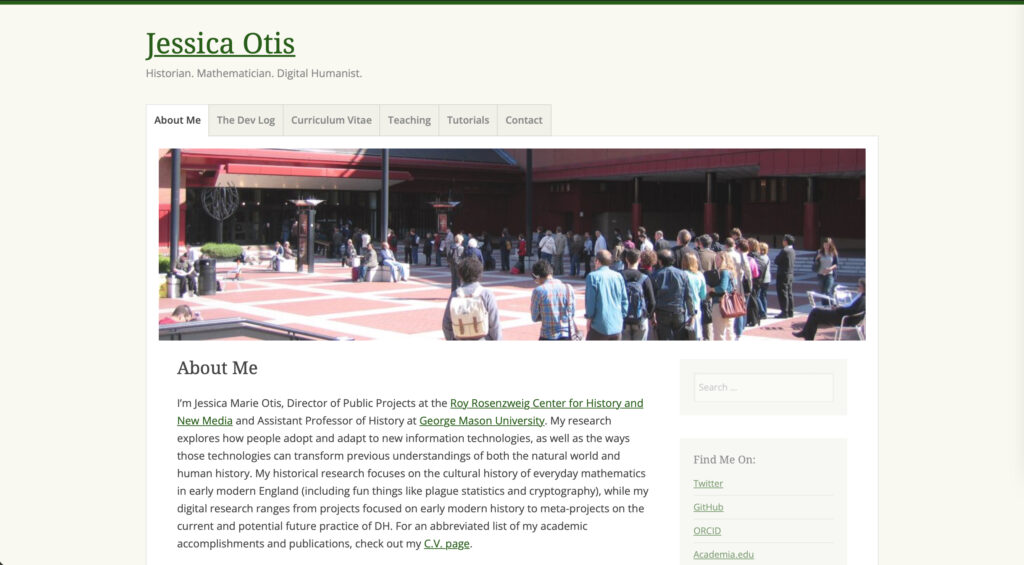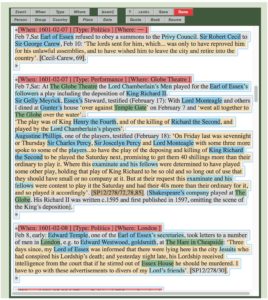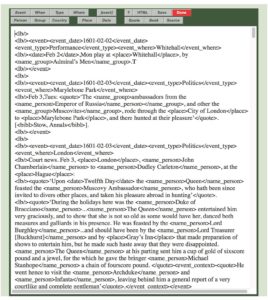I have been privileged to work with several awesome graduate students this semester, including Cordelia “Cory” Brazile and Lauren Churilla. A few weeks ago, we had a thought-provoking conversation about using Wikipedia in the classroom that inspired this blog post.
I’m sure I’m not the only one who despairs when my students cut-paste out of Wikipedia in their classroom papers. But the ship of “don’t use Wikipedia” sailed at least a decade ago, if not more, and honestly it’s not completely different from the age-old problem of “don’t copy from encyclopedias.” Tertiary sources have always (for definitions of always involving everyone alive today) been a part of our academic landscape and have clear uses for both research and pedagogy so banning the use of encyclopedias (crowdsourced or not) makes no sense. We need to use them responsibly and teach our students to do the same.
Enter Wiki Edu, a set of online resources dedicated to supporting teachers who want to incorporate Wikipedia assignments into their syllabi. If you have the desire and inclination to structure a major classroom assignment (equivalent to a whole-semester or half-semester research paper) into your syllabus, I highly recommend checking the site out. It includes a host of video resources that teach students how to edit Wikipedia – including videos on copyright and attribution – and teachers who register their classes on the site can get technological and staff support during the assignment.
That said, not everyone has the time or inclination to engage that intensely with Wikipedia. Our syllabi are jam-packed with everything else we need to convey to students and many teachers don’t want to reinforce an encyclopedia-like “history is facts” mentality over the argumentative, thesis-driven model of historical writing. So what are some alternatives? This is the list Lauren, Cory, and I brainstormed.
- Explore an article edit history to see how the “facts” emerge over time.
Using the example of the World history article, students can use the “view history” link to see the original version of this article in which a user snarkily defined world history as:
First the earth cooled.
Then the dinosaurs got too big and fat so they all died.
Referneces:
Johnny, “Airplane – the Movie”
(Among other things, this provides students with a window into why some teachers view the site with serious skepticism…) In the following years, the page was redirected to “History” more generally, then redirected again to “History of the World,” before finally becoming a brief definition of the field of World History and expanding from there. Guiding students through a journey likes this helps them understand the evolution of the “facts” that they often take for granted when reading a Wikipedia article.
- Explore an article’s talk page to see how the “facts” of controversial subjects are negotiated among interested parties.
The Wiki Edu resources deliberately steer students away from editing controversial articles (which is smart given their assumptions that students are editing/writing articles) but exploring these controversies can give students a peek behind the curtain of Wikipedia’s vaunted “neutrality.” Each article has a talk page, where editors can discuss changes before making them (or debate changes if someone else has reverted their changes). Exploring an article’s talk page in addition to the edit history gives an added dimension to the goal of exposing students to how historical consensus emerges in the case of controversial subjects. As a bonus, the talk pages themselves have a edit history! Reading the edit history of, say, the Black Lives Matter Wikipedia talk page is a fascinating exercise in the construction of Wikipedia article, in addition to educating students about the emergence of the movement. Wikipedia maintains a page with a list of controversial articles, which range from politics to sports, as well as a page on Wikipedia controversies.
- Examine the bibliographies of articles and assess the chosen sources for bias.
Despite Wikipedia’s attempts to create “neutral” articles, which don’t favor any particular point of view over another, it doesn’t always succeed. Sometimes the bias is overt and comes under review or is tagged as biased. In other cases, however, the bias emerges only by carefully reviewing the sources chose for citation. My favorite biased article (yes, I have a favorite) is the Long Parliament article, which is almost entirely derived from the work of two nineteenth century publications and is very Whiggish. I’ve been using it as an object lesson to my students for over four years now and eventually someone will fix it but it hasn’t happened yet! Exploring the bias in this particular article also leads to a greater discussion of the nature of copyright, what sources people seeking to edit Wikipedia have – or don’t have – access to, and how lack of access to cutting-edge academic research might create barriers to public understanding. Insert discussion of the Open Access movement here…
- Find articles that have been flagged for lack of citation and see if students can find reliable citations for them.
Wikipedia flags articles that need additional verification as well as maintains a page with a list of all these articles. (It even includes a button “I can help! Give me a random citation to find!” to get people started.) Asking students to work on a particularly under-verified article requires them to discover research sources outside of Wikipedia. Students then can practice providing sources for assertions of fact or determine that alleged facts lack citation because there is no evidence for them and modify the articles accordingly.
- For multilingual students, examine the difference between the English language version of a article and the version in a different language.
We know that Wikipedia exist across multiple languages, but not everyone realizes that articles can differ radically between languages. The English Wikipedia article for King Sancho IV of Castile, for example, is a mere 5 sections long, most of which are genealogical, while the Spanish version is over twice as long with 11 sections. Comparing the two helps introduce students to the idea that “facts” and “common knowledge” can actually be culturally – in this case linguistically – determined.
- Last, but not least, conduct targeted article edits.
Just because you don’t want to spend a huge chunk of your semester doing a Wikipedia assignment doesn’t mean that it can’t be productive to do some group live-editing of an article during class, or as a single homework assignment. Showing students how to make simple tweaks to the site gives them a better understanding of the crowdsourced nature of the site and how it’s constantly being updated – and may reinforce both a sense of publicly contributing to knowledge instead of writing solely for an audience of the teacher, as well as the idea that perhaps they should question the veracity of things they read online, instead of taking it all for granted.
So those were our ideas! If you have any other great things you’ve tried out with Wikipedia in the classroom, I’d be interested to hear it.




